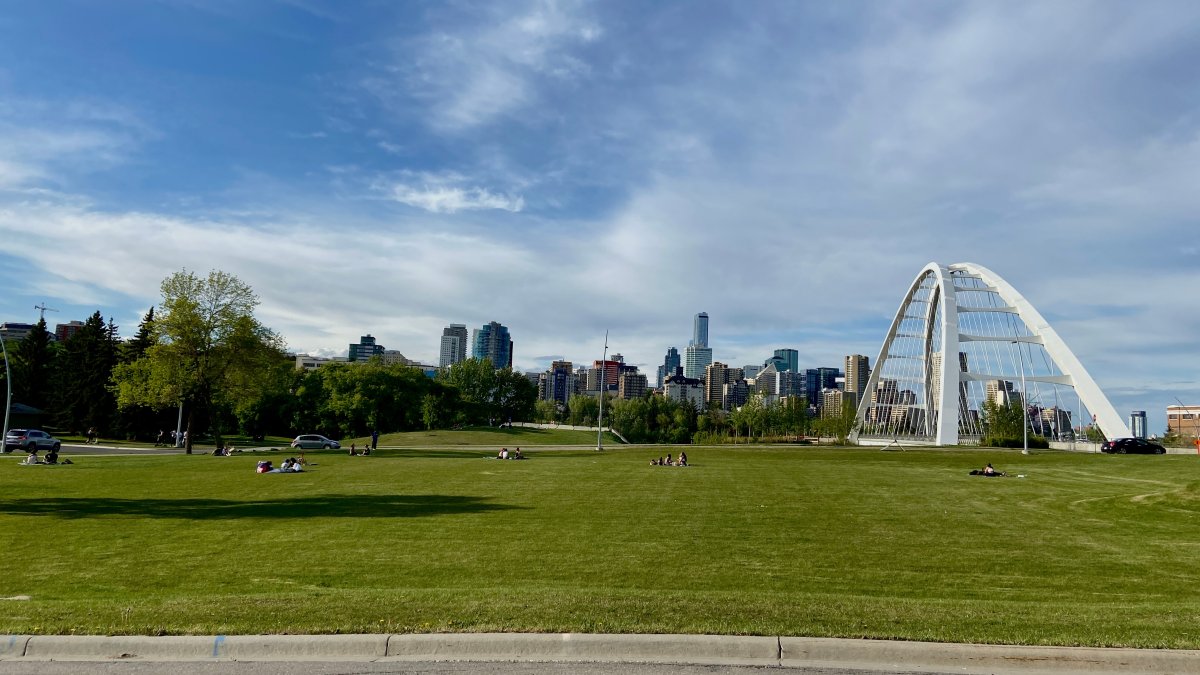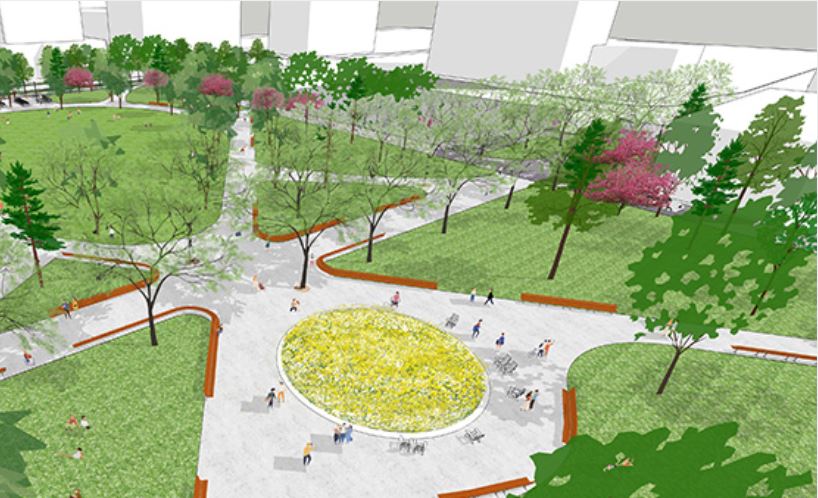The birds are chirping, the bees are buzzing and spring is in the air — which means the city is back to looking after all the parks and green spaces across Edmonton.

Park attendance has grown since the beginning of the pandemic, the city said in an update Tuesday, with some visitor counts seeing increases of more than 50 per cent in 2020-2021. The city expects the trend to continue.
The popular Green Shack program will also run at multiple parks across the city through July and August, the city said on Tuesday. The program offers kids between six and 12 a place to play games, make crafts, learn and get exercise under the supervision of Green Shack leaders.
For those who enjoyed a cold one at a park last year, good news: the City has also resumed and expanded the pilot project permitting alcohol consumption at 124 picnic sites across 18 parks citywide. This pilot will run until Oct. 10, the city said.
To make sure all the green space is ready for increased use, the city said there is a lot happening behind the scenes including mowing, pruning, planting trees, rejuvenating fields and servicing trails.
“Our crews maintain more than 1,000 parks, including over 4,000 hectares of turf — that’s equivalent to approximately 8,000 CFL football fields,” said City of Edmonton operations planning and monitoring general supervisor Nicole Fraser.

There are also 380,000 trees in open spaces and boulevards, 202 hectares of shrub beds, at least 160 kilometres of maintained pathways, 2,400 hectares of natural areas — including the river valley — and plenty of fields and other park amenities.
“Needless to say, there’s a huge inventory we maintain and there’s a lot happening behind the scenes that someone might not notice, but our crews are out there every day caring for our park spaces,” Fraser said.
Turf maintenance at parks will be completed on a 10- to 14-day schedule, except for premier and high profile parks and sports fields, which the city said will be maintained on an existing seven- to 10-day cycle.
This year the city said it’s adding a second cycle of line trimming — or weed whacking — with the first cycle happening in June and the second in August.
Park projects in the works for 2022
Last year, the city said it completed 23 open space projects that include trails, ball diamonds, playgrounds and cemeteries.
For the 2022 construction season, the city says it has 29 parks and open spaces projects in construction, 36 projects in planning and design, and is preparing to see continued growth in the use of parks, trails and open spaces across the city.

Among the 2022 construction projects, the city said it will complete renewal projects at several parks and trails, including Glengarry District Park, Confederation District Park, Ramsay Ravine and others.
“Heritage Valley District Park is a new park being constructed on the south side and will support two high schools as well as the new neighbourhoods in the area,” said Suzanne Young, director of open spaces planning and design.
“On the south side, Confederation District Park renewal will finish later this year and on the north side, Glengarry District Park renewal will refresh many of the assets on-site and we’ve seen a lot of excitement around the addition of pickleball courts to the park.”
The city said it will also build or renew playgrounds at Rundle Heights and Griesbach parks and plant nearly 3,000 trees through the Urban Tree Canopy Expansion Project.

Get breaking National news
“Edmonton has a goal of 22 million new trees by 2050, and this project is helping to plant the trees needed to achieve this goal,” Young said.
The City is also planning for future parks, including Warehouse Park, a downtown green space that will cover 1.47 hectares of land — the size of more than two football fields — on a large parcel of land between 106 Street and 108 Street and Jasper Avenue to 102 Avenue.
‘It is in the first phase of public engagement,” Young said, adding the city is seeking feedback on two concepts.
“Warehouse Park is envisioned to be a large open oasis. It will transform the downtown core as we go from parking lots to paradise.”
The city is looking for feedback via a survey that’s open until May 22. The city said it will review the results and bring forward a refined design later this year.
The warehouse park is anticipated to open in 2025.

More naturalization across Edmonton
In recent years, there’s been a focus on returning some of Edmonton’s green spaces to their original state through a process called naturalization.
The city describes the process as an ecologically-based approach to landscape management used to transform highly-manicured land to a more natural condition.
“It’s an important process that takes several years to fully realize,” Fraser said.
“It also increases habitat and food sources for plants, birds, wildlife and beneficial pollinators such as bees and butterflies. In addition, it increases areas for planting trees and shrubs, which in turn provide benefits to residents such as windbreaks, shade and beautification.”

The city said naturalization is a three-step process. First, the city stops mowing and doing weed control, then if appropriate, trees and shurbs are planted. Once those mature, the city may go back in to do underplanting of more bushes, wildflowers or other native plants that increase biodiversity.
“Naturalization isn’t just completed in that way,” Fraser added. “More and more, it’s also being incorporated into designs of new park spaces and new neighbourhoods built by developers or partners that the city works with.
“So you can see naturalization more and more as part of the design and build of new projects as well.”
As the weather improves, those unmistakable spots of yellow are beginning to appear in fields across the city.
The city said naturalization, in addition to regular mowing, is the best way to control dandelions on parkland in the city.
“Dandelions will be competed by the long grass in naturalized areas once it matures. This can be seen along roadways in established naturalized areas,” Fraser said.
Those who expect the City of Edmonton to do anything about the persistent plants will be disappointed: except in the most extreme cases, no herbicides are used.
“Dandelions are not a prohibited noxious weed, and therefore we do not control this species using herbicides unless it’s associated with locations such as high profile sports field inventory.”
One thing the city is not considering: bringing back the goats in Rundle Park. Introduced in 2017, the three-year GoatWorks pilot project used the animals as an environmentally conscious method of weed control in natural areas and parks.
Fraser said in 2020 and 2021, the city did some research on the effectiveness of the goat project and there are no plans to restart it.
“We are looking into alternative methods for turf control on boulevards and in parks. And we recently have been asked to look at opportunities for urban farming and community gardening in parks and open spaces, which might include opportunities for grazers as well. But we’re just starting that research right now,” Fraser said.
The goat program was introduced in response to city council’s ban on cosmetic herbicides, with some exemptions, on city-owned land in 2015.











Comments